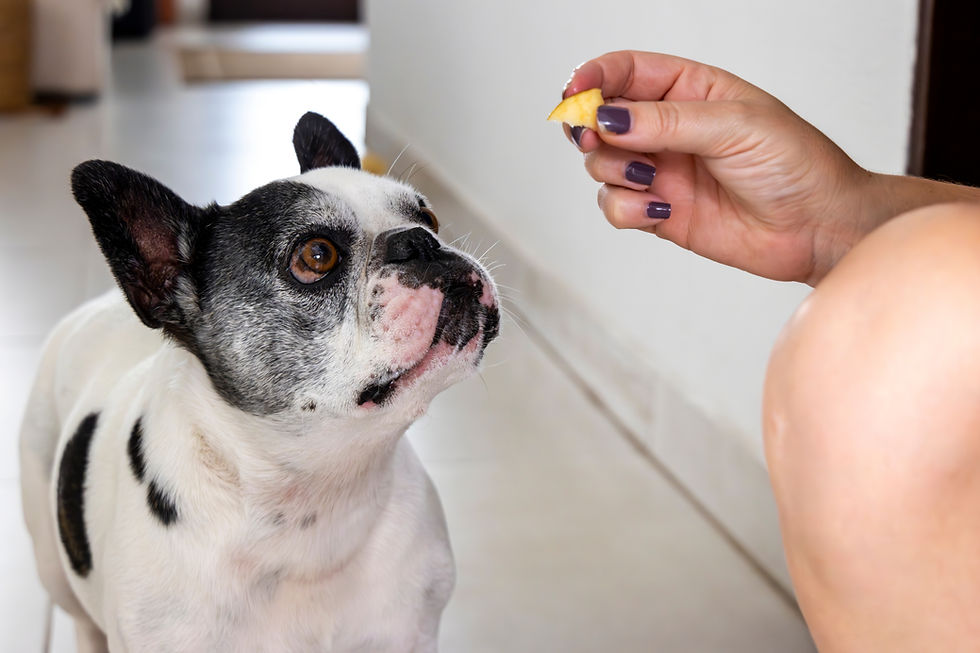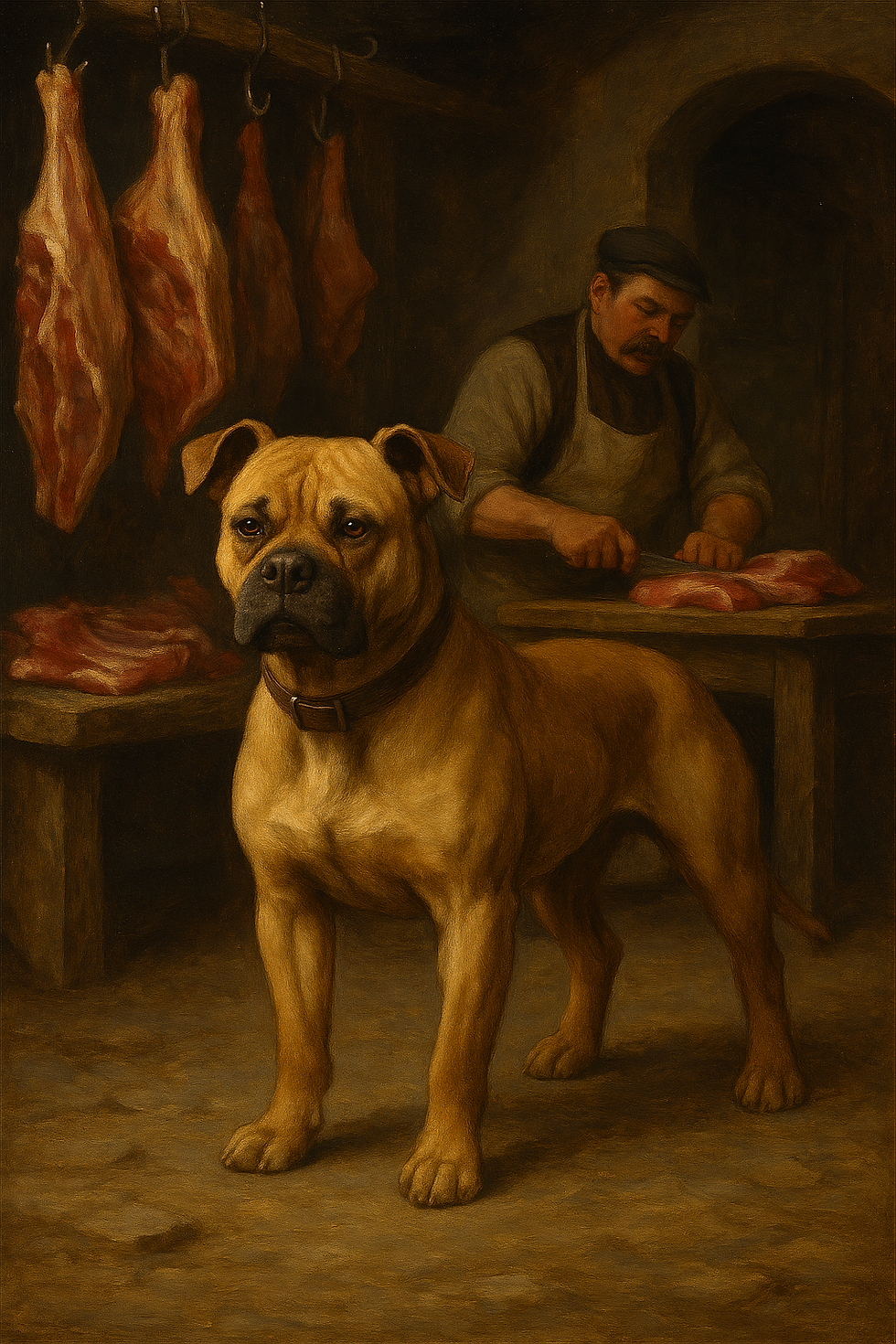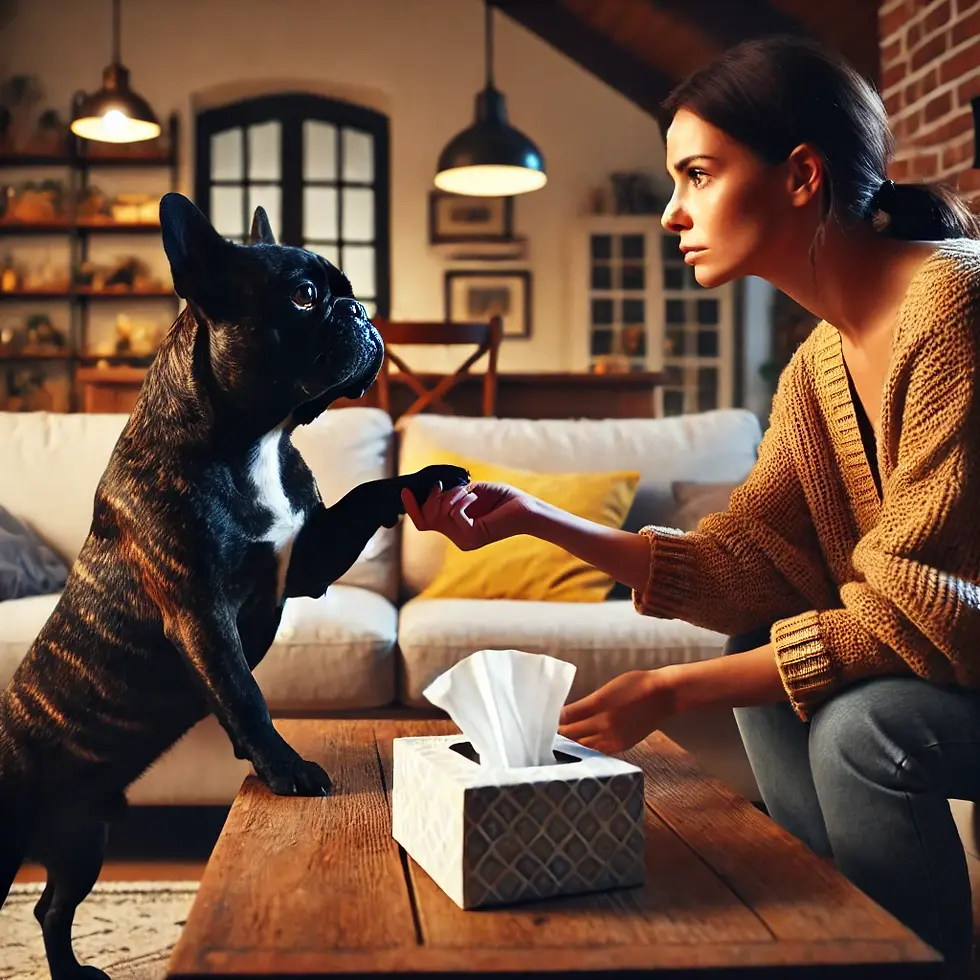🦴 Is Treat Training Considered Bribery?
- heathergi85
- Mar 4
- 3 min read
When it comes to dog training, a common concern among dog owners is whether using treats is considered bribery. Some worry that their dog will only listen if a treat is present, while others question if reward-based training is as effective as more traditional methods.
At Calluna Canines, we specialise in reward-based training for food-motivated dogs, using force-free, science-backed methods that help you build a strong bond with your dog—without fear, frustration, or outdated techniques.
Let’s break down the difference between bribery and positive reinforcement, and why using food in training is an essential part of modern dog training.

🍖 Bribery vs. Positive Reinforcement
Bribery and positive reinforcement may seem similar, but they serve very different purposes in training.
🔴 Bribery happens when a treat is presented solely to persuade a dog to comply rather than reinforcing a learned behaviour.
For example, if your dog refuses to sit and you suddenly produce a treat to coax them into it, they may learn to only respond when they see food first—this is bribery.
🚨 Now, don’t get this confused with luring.
Luring is a valuable training tool when introducing new behaviours, as it helps guide the dog into position with a treat. The key difference? Luring should be faded over time, so the dog learns to respond to the cue itself rather than relying on the lure—unlike bribery, which creates dependency on seeing a reward first.
🟢 Positive reinforcement, on the other hand, is about rewarding a behaviour after it happens. When your dog sits on cue and then receives a treat, they make the connection that sitting when asked results in something good. This strengthens the behaviour and increases the likelihood that they will repeat it in the future—whether or not they see a treat in your hand beforehand. Unlike bribery, this is more like getting paid after a job well done. Sorry, dogs—no advance payments!
🎯 Why Reward-Based Training Works
Dogs, like people, are more likely to repeat behaviours that benefit them. Reward-based training for food-motivated dogs is one of the most effective ways to teach new skills, strengthen your bond, and build trust.
Here’s why it works:
✅ It’s Scientifically Proven – Research supports that positive reinforcement leads to faster learning and better retention compared to punishment-based training.
✅ It Encourages Willing Participation – Dogs trained using force-free methods choose to engage in training rather than acting out of fear or avoidance. It’s like choosing to do your chores because you know there’s cake afterward.
✅ It Builds Confidence – Rewarding your dog for making good choices boosts their confidence, which is especially important for anxious or reactive dogs. Think of it like acing a test and getting a gold star—except the gold star is made of chicken.
At Calluna Canines, we see first-hand how reward-based training transforms training struggles into success stories—whether it’s loose lead walking, recall, or reactivity.

🍗 How to Transition Away from Food Rewards
One concern about treat training is that a dog will always expect food. The key is knowing how to phase out treats over time while still reinforcing good behaviour:
🔹 Start With Frequent Rewards – In the beginning, reward every successful response to a cue. Think of it like training a new employee—you wouldn’t just say, “good luck” and disappear!
🔹 Switch to Intermittent Rewards – Once your dog reliably responds, start rewarding randomly—sometimes with treats, sometimes with praise, toys, or real-life rewards (like going outside). Keep them guessing like a slot machine—but with less financial risk.
🔹 Use Real-Life Rewards – Dogs find reinforcement in many ways beyond food. Letting them off-lead in a secure area, playing with a favourite toy, or even belly rubs can be just as rewarding—kind of like trading a bonus cheque for a spa day.
💡 Final Thoughts
Treat training isn’t bribery—it’s a scientifically backed, effective way to teach dogs through positive reinforcement. When used correctly, treats are a tool to communicate what behaviours you want. Over time, with proper reinforcement strategies, your dog will respond reliably—even without a treat in sight.
By embracing reward-based training for food-motivated dogs, you’re setting your dog up for success in a way that’s enjoyable for both of you!
💬 Want more personalised training tips? Get in touch with us today to learn how we can support you and your dog on your training journey!
And remember, if all else fails, dogs are suckers for a good belly rub. 🐶✨
_edited_j.jpg)





Comments